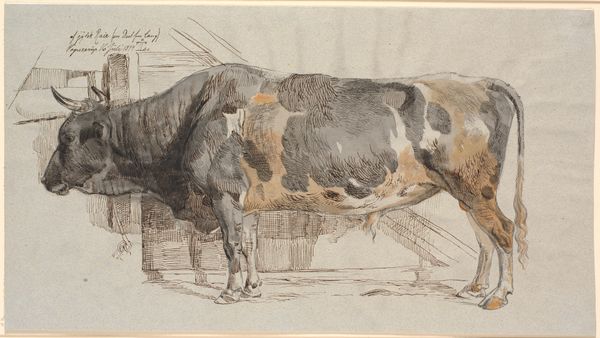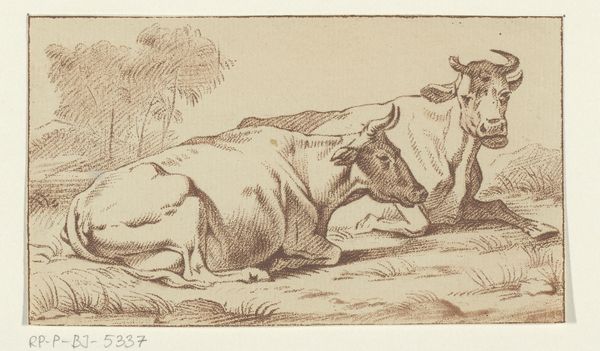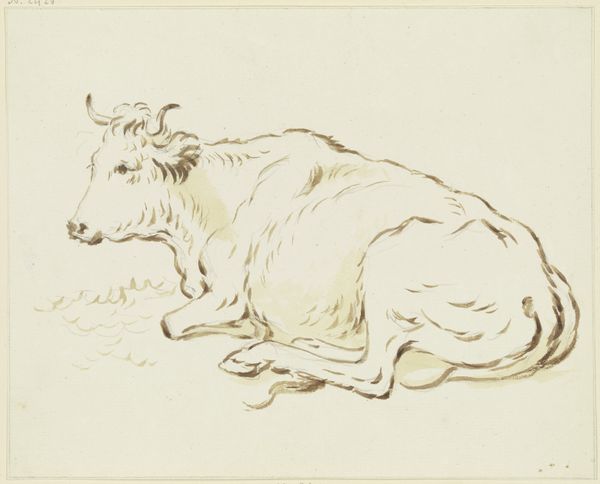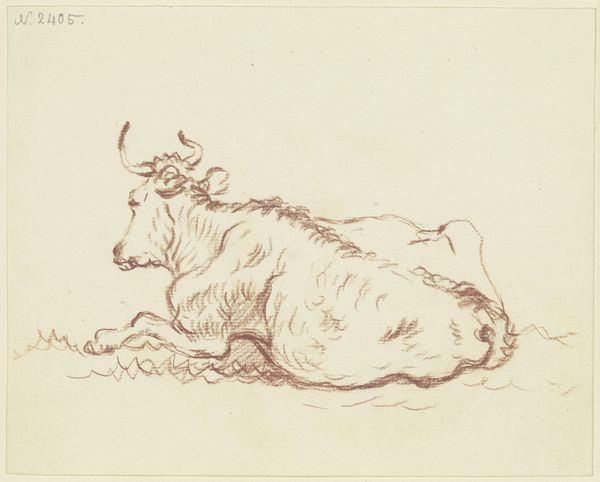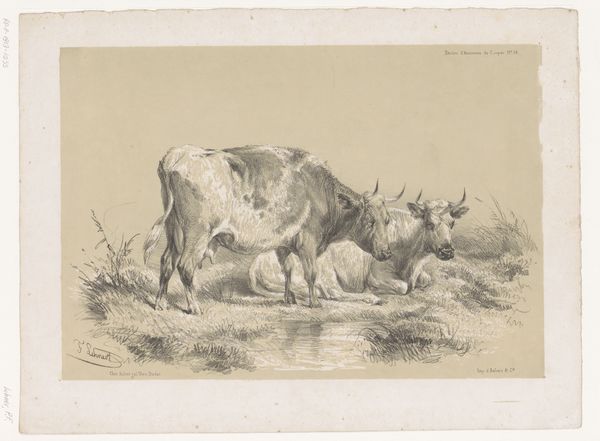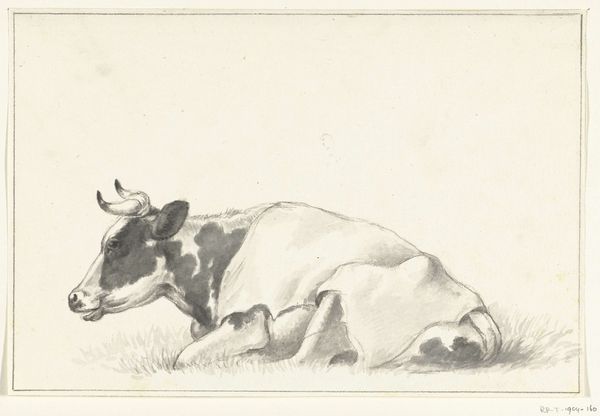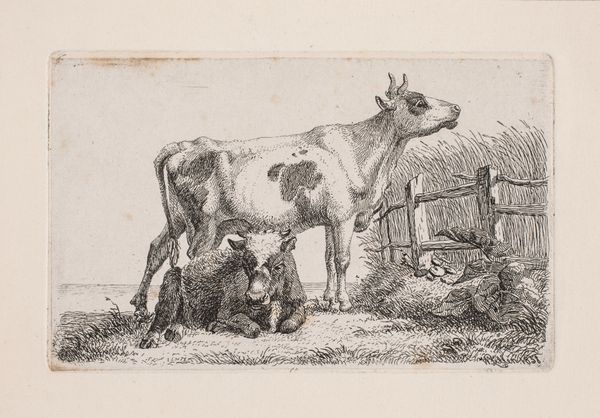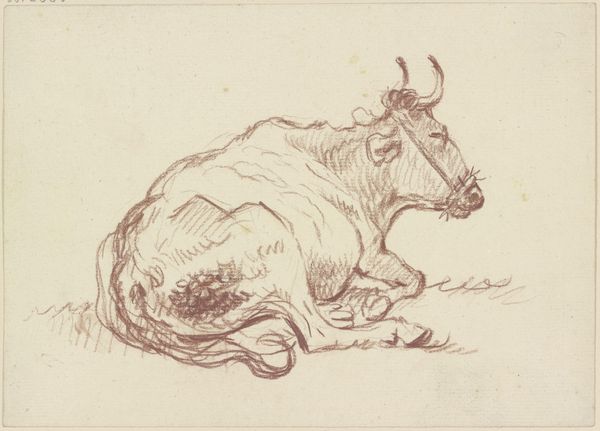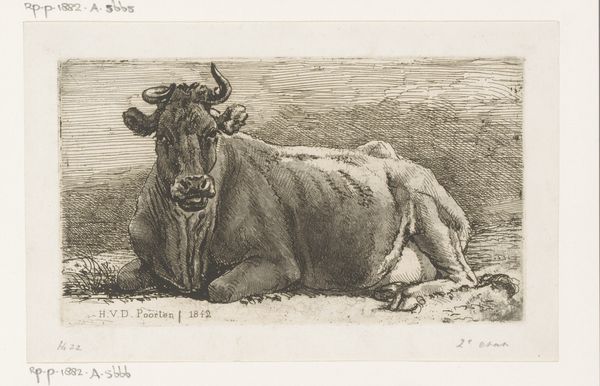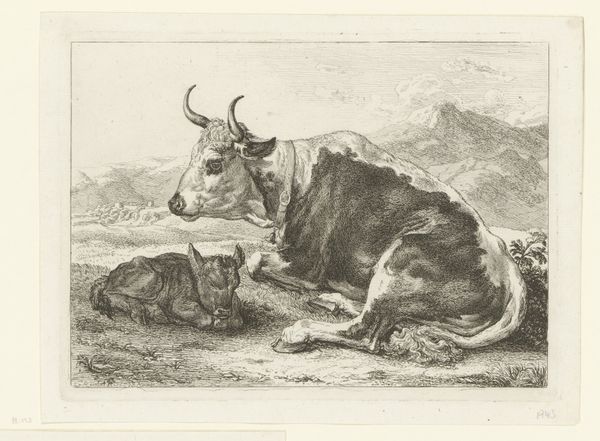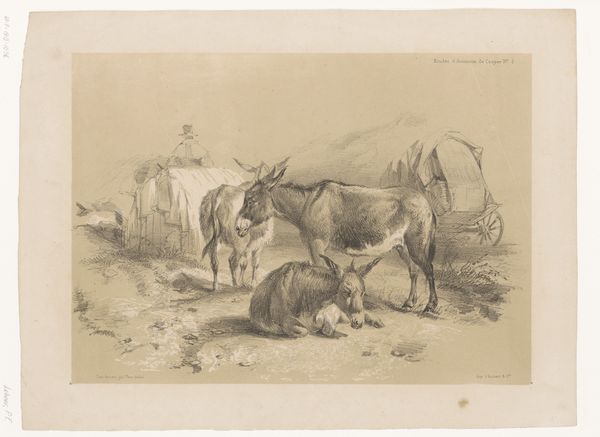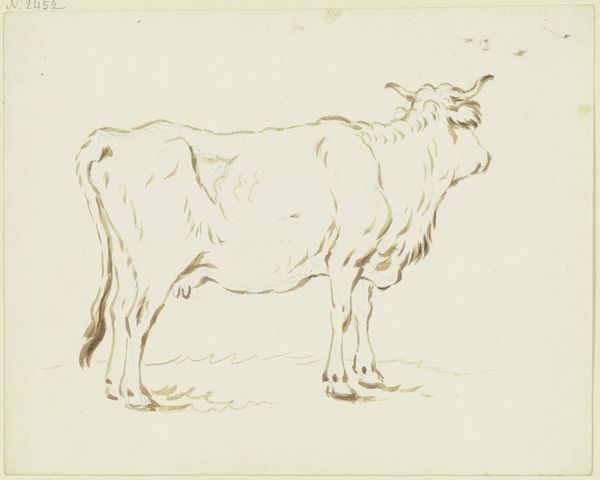
Liggende ko. Foroven til venstre en siddende bondepige, t.h. en kat drikkende af en mælkebøtte 1843
0:00
0:00
drawing, plein-air, paper, watercolor, ink
#
drawing
#
plein-air
#
landscape
#
figuration
#
paper
#
watercolor
#
ink
#
romanticism
#
genre-painting
Dimensions: 187 mm (height) x 305 mm (width) (bladmaal)
Curator: This delightful drawing, "Liggende ko. Foroven til venstre en siddende bondepige, t.h. en kat drikkende af en mælkebøtte" by Johan Thomas Lundbye, dates to 1843. It combines ink and watercolor on paper, presenting a charming scene. What's your initial response to it? Editor: The immediacy is striking! It feels so informal, more like a sketch from life than a finished painting. It has this aura of bucolic tranquility, a sort of serene rural scene removed from any socioeconomic stresses—idealized, perhaps? Curator: Interesting point! Consider how Lundbye, deeply influenced by Romanticism, often sought to capture the soul of the Danish landscape and its people. Cows in art, particularly in Dutch Golden Age painting, symbolize prosperity and domesticity. In this context, how might that play out? Editor: Well, positioning this artwork within the historical context of 19th-century Denmark, you've got a period of significant agrarian reform. Seeing a rural subject so intimately could be a way to engage with the shift of rural identities in a time of cultural transformation and socioeconomic uncertainty. The inclusion of the farm girl and cat speaks to a hierarchy. Curator: Hierarchy indeed, reflected through a cultural lens of observation! A recumbent cow mirrors timeless images associated with gentle strength and patience—qualities highly valued in agrarian life and throughout folklore in that time. Note how its repose and gentle form elicit feelings of peace and plenty, recurring motifs with links to much older, enduring pagan reverence of nature's bounty. Editor: Exactly. The cat drinking from what appears to be a milk pail might be an interesting reflection on rural domestic labor and the place of animals in the household structure. It also could represent what Michel Foucault would discuss in tandem with docile bodies. Curator: Fascinating observation. But consider the symbols and the more lasting image, its ability to evoke the deep seated respect for the land inherent within its brushstrokes, connecting us across time. I'm drawn to the cross-cultural symbols representing the endless turning of the seasons. Editor: Well, I was trying to unpack a cultural critique of gender and work. Curator: I see the quiet power of tradition mirrored in simple moments in everyday life! This image has such enduring resonance. Editor: A reminder, perhaps, that the political is always personal.
Comments
No comments
Be the first to comment and join the conversation on the ultimate creative platform.
